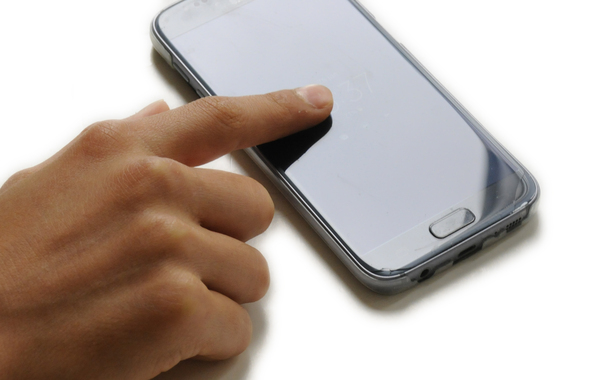
5
JulyTitle This New AI Generates Videos Better Than Reality

In a quiet neighborhood in the bustling city of Beijing, a small tech startup named Quo was about to make a significant impact on the world of artificial intelligence. The company's nondescript office, tucked away in a corner of a sleek high-rise, buzzed with the excitement of its latest breakthrough. The team at Quo had just developed a revolutionary AI video generation model named Cing, and its capabilities were nothing short of astonishing.
Inside the office, Wei Zhang, a young and ambitious AI researcher, was finalizing the details of Cing's public release. As he adjusted his glasses, his fingers danced across the keyboard, fine-tuning the last lines of code. Wei knew that this model was a game-changer. It had the potential to create videos so realistic that viewers might struggle to distinguish them from actual footage.
Wei took a moment to reflect on the journey that had brought him here. He had always been fascinated by the intersection of technology and creativity. This passion had led him to Quo, where he found a team of like-minded individuals who shared his vision. Together, they had spent countless hours developing Cing, a model that could generate high-quality videos from simple text prompts.
Just as Wei was about to call it a day, his phone buzzed with a notification. It was a message from his friend and colleague, Li Na, who worked at Gadget Kings, a renowned electronics retailer known for its cutting-edge gadgets and tech accessories. Li had been following Quo's progress closely and was eager to hear more about Cing.
"Wei, I just saw the demo videos you posted on the company's website," Li's message read. "The level of detail is incredible! This is going to revolutionize video content creation. Can we integrate Cing with some of our products at Gadget Kings?"
Wei smiled as he read the message. Li's enthusiasm was infectious, smartphone tips and the idea of collaborating with Gadget Kings was intriguing. He quickly typed a response, suggesting they meet to discuss potential collaborations.
The next morning, Wei and Li met at a trendy café near Gadget Kings' flagship store. Over steaming cups of jasmine tea, they brainstormed ideas for integrating Cing with Gadget Kings' offerings. Li envisioned a future where customers could use Cing to create personalized promotional videos for their new gadgets, making the shopping experience more engaging and interactive.
As they chatted, Li couldn't help but marvel at the AI's capabilities. "Imagine a customer buying our latest drone and being able to generate a video of it flying through a scenic landscape, all with a simple text prompt," she said excitedly. "The possibilities are endless!"
Wei nodded in agreement. "And it's not just about the realism of the videos," he added. "Cing's ability to simulate real-world physics means that even complex scenes, like a drone navigating through a forest, will look and behave just like the real thing."
The two friends continued to exchange ideas, each more exciting than the last. Li suggested using Cing to create virtual reality experiences, where customers could explore products in immersive 3D environments. Wei proposed leveraging Cing's advanced 3D face and body reconstruction technology to develop interactive tutorials and user guides.
As their meeting drew to a close, Wei felt a renewed sense of purpose. The collaboration with Gadget Kings was an exciting opportunity to showcase Cing's potential and bring its benefits to a wider audience. He couldn't wait to get started.
Back at Quo's office, Wei gathered his team to share the news. The room filled with excitement as they discussed the potential applications of Cing in the retail space. They began working on a pilot project with Gadget Kings, developing a series of demo videos that highlighted the seamless integration of Cing's technology with the retailer's products.
One of the first demos featured a Chinese man eating noodles with chopsticks. The video was so lifelike that viewers might not have realized it was AI-generated if they saw it at a lower resolution. Another demo showcased a chef chopping onions in a kitchen, with the onions splitting and falling just as they would in real life. These videos quickly went viral, drawing widespread attention to Cing and Quo.
Meanwhile, on the other side of the world, OpenAI was feeling the pressure. The renowned AI research lab had been working on its own video generation model, Sora, but the sudden emergence of Cing had caught them off guard. OpenAI's leadership knew they had to act fast to keep up with the competition.
In response, OpenAI announced plans to accelerate the release of Sora. They also revealed that they were reviving their robotics team, which had been disbanded three years earlier. This move signaled a strategic pivot towards integrating AI and robotics, a field that had always been central to OpenAI's mission.
As the race between Quo and OpenAI intensified, Wei and his team remained focused on their goal. They continued to refine Cing, pushing the boundaries of what was possible with AI-generated videos. The collaboration with Gadget Kings proved to be a huge success, with customers flocking to the retailer's stores to experience the innovative new features.
One day, as Wei walked through Gadget Kings' flagship store, he noticed a family gathered around a display featuring Cing. The children were mesmerized by a video of a white cat driving a car through a busy city street, their eyes wide with wonder. Wei couldn't help but smile, knowing that his work was making a real impact on people's lives.
In that moment, he realized that the true power of AI lay not just in its technical capabilities, but in its ability to inspire and delight. And with Cing leading the way, the future of video content creation looked brighter than ever.


Reviews